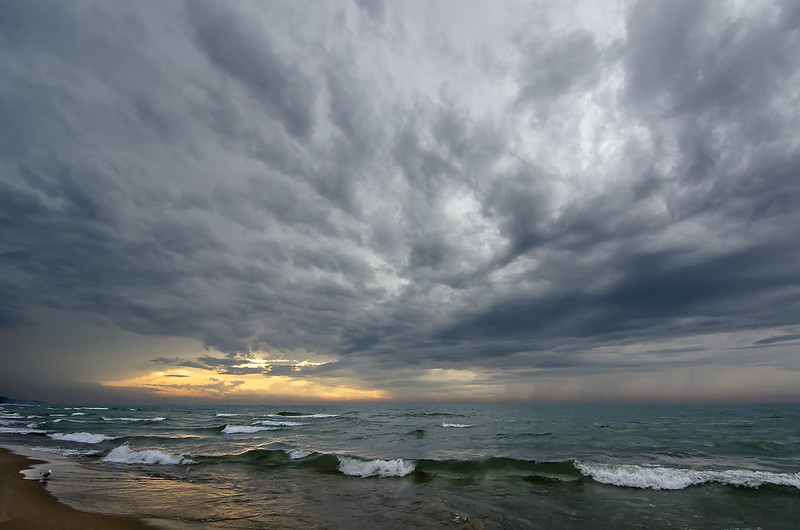
It's great to know that at least a few of the dunes on the Indiana shore of Lake Michigan are open to climb. Most are off limits, no foot traffic allowed, in an attempt to keep the dunes from eroding. Understandable in some cases- especially where the Marram Grass is not taking hold. However, in my experience, when an existing path (official or otherwise) is closed to foot traffic, ignorant people disregard the signs, and walk around them, eroding a far larger area than if the original path was kept open.
But the jury is still out on that matter; Lake Michigan itself seems to cause more damage to the dunes than human feet - just look at the aftermath of the last two storms that hit the area. Waves crashed into the foot of the dunes, causing massive erosion of the foredunes. A natural occurrence, and one not caused by feet. In fact, any damage or changes to the dunes done by human feet in the past century were washed away into the lake. Blame the Michigan City breakwater for starving these beaches of sand, not the wide-eyed child climbing a dune for the first time.
Closing most of the dunes from foot traffic seems excessive. Mt. Baldy was regulated a couple of years back, to keep people away from the areas of the dunes that were replanted with Marram Grass. Yet, intentional paths remained so visitors could experience the view from the top. Reasonably so, the remains completely closed after the near tragic cave-in back in July 2013, but there are few if any foredunes one can climb today without man-made stairs. Of course, indefinitely closing all of Mt. Baldy keeps people off of the Marram Grass - coincidence?

Fall is here, and soon many of the Indiana Dunes National Lakeshore beaches will close for winter. In past years, Mt. Baldy was open year-round, providing access to the frozen lakefront, and Central Beach allowed parking for two or three cars in front of the locked parking lot gate. These beaches in winter are amazing - words can't describe them. The shelf ice piles to heights of 15 feet or more, and stretch out hundreds, sometimes thousands of feet into the Lake. Yet, these two beaches are off limits in winter - what a blow to the visiting public. Anyone familiar with the area knows the ice is much different here than the few open park areas to the west.

Because Mt. Baldy remains closed, I suggest the National Lakeshore consider allowing full or limited parking at Central Beach all winter, allowing visitors to access this winter treasure. Why not? Central Avenue is plowed to the parking lot anyway. Cost can't be much of an issue, especially if one takes into account Mt. Baldy in past years was open year-round, and is now closed. Why not allocate those resources for snowplowing, and washroom maintenance at Central Beach? If cost is a hindrance, then close the washrooms, but allow parking. At the very least, give the public the opportunity to view this area in winter.

In this Internet era, I suppose one can visit the park virtually, Children can use their smartphones to view old photos taken by their grandparents who were lucky enough to walk on the dunes in winter. Is the goal to impede the dunes, or to protect the dunes? Closing these areas seems to point to the former.


























